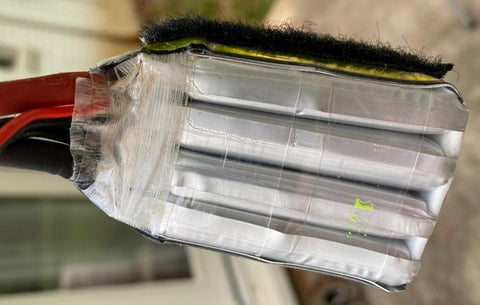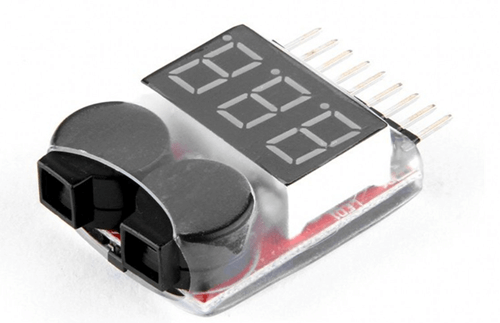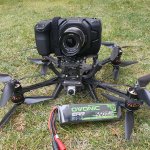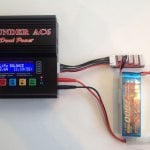Lithium polymer batteries (lipo batteries)store a lot of energy. It is still nowhere near that of an equal weight of petrol but it’s much higher than any other battery. The result is that a failure or short circuit can result in a catastrophic fire or even a small explosion.
Charge
Lithium polymers shouldn’t be left unattended whilst charging. Ideally they should be charged in a lithium polymer charging bag or similar flame proof container. Lithium polymer charging bags are easily available from most places that sell the batteries. Some people prefer to use a metal or ceramic container with a lid – (empty) ammo tins that can be bought from army surplus stores are also ideal.
If you leave a lithium polymer battery to charge unprotected anywhere around flammable items found in most houses, like carpets, a small failure can turn into a large house fire. It’s not common but it has happened so don’t let it happen to you.
Use and handling

Lithium polymer batteries should also be stored somewhere away from flammable objects. Outside or in a garage is ideal, failing that the charging bag or ammo tin or similar flame proof container should do the job.
If you damage a lithium polymer by puncturing it it’s likely to catch fire – it can be quite dramatic and dangerous. Again, keep them away from flammable objects and small children likely to poke them with scissors. If you have a bad crash and your battery looks damaged then dispose of it safely – don’t recharge it or keep it in the house.
The best way to dispose of old or damaged lithium polymers is to put them in a bucket of salty water, outside, and leave them there until the bubbles stop – preferable a day or two to make sure.
It almost goes without saying, but i will say it anyway. Unlike an old square 9 volt battery it is definitely NOT SAFE TO LICK THE TERMINALS TO CHECK IF THE BATTERY IS CHARGED. At least not if you like having a tongue
Lipo Alarms
Most multirotor fliers use low voltage alarms to prevent their lithium polymer batteries from dipping below the critical 3.3 volts. They can be set to go off at around 3.5 volts so that you know to land before you irreparably damage your batteries. Also if you allow your voltage to dip below 3.3 volts you will start to lose all power and control, so it’s not just the battery that will be damaged but also the multirotor (and anything underneath too!).
Some low voltage alarms have LEDs, some have digital readouts that display actual voltage readings and most have buzzers. It’s up to you what you prefer to use but loud buzzers are particularly useful as they allow you to hear the alarm even when the quadcopter is too far away to see the LED or digital readout.

Once you’ve managed a few flights with the low voltage alarm you will get a feel for how long you quadcopter stays up for before the alarm goes off (a stop watch will help here).
If you know your quadcopter flies for 10 minutes before the alarm sounds you can set a timer on your transmitter to beep after 9 minutes. This gives you a bit of extra warning and means you can land with an extra 10% of safety margin. This will prolong the life of your lithium polymer batteries; generally it’s better to buy one more battery pack and not squeeze every last drop of energy out of them on every flight – you’ll find they last longer before they start to wear out.
In addition, please pay attention to the temperature & balance when using
If you short circuit a lithium polymer battery it will try to discharge it’s entire store of energy in one go. Whatever it’s C rating you will exceed it and as the battery tries to empty itself it will swell up and possibly catch fire. Even worse, the contacts are likely to weld themselves together with a big fat spark making breaking the short circuit even more difficult.
When soldering new battery connectors to your lithium polymer battery you should only cut, strip and solder one terminal at a time. This may seem obvious but it’s a surprisingly easy mistake to make, especially when you are new to the subject (don’t ask me how i know this :embarrassed).
If you have both wires stripped at the same time then make sure you have one sellotaped back again the battery out the way of the other. It only takes a split second for the two to contact each other – then it’s game over for the battery and you may have a small fire to put out.



